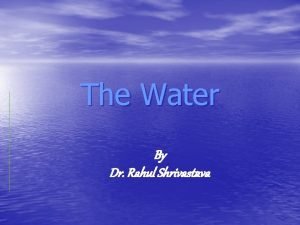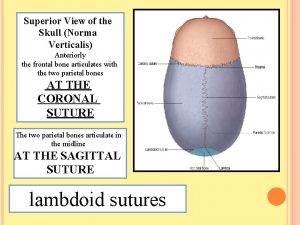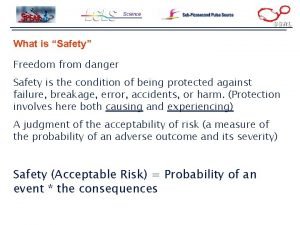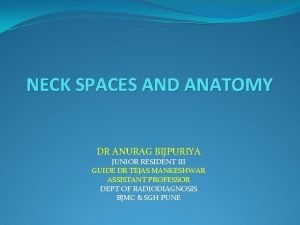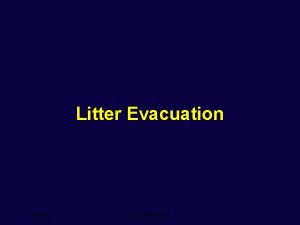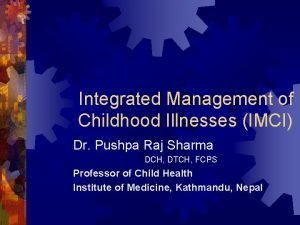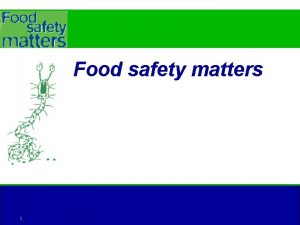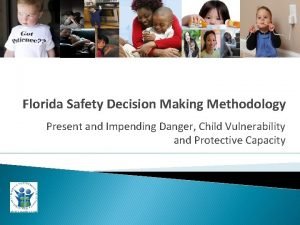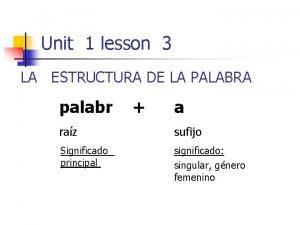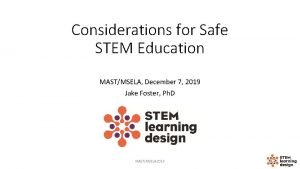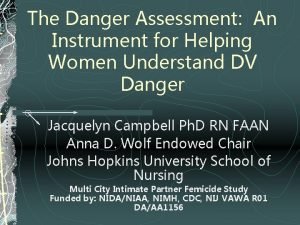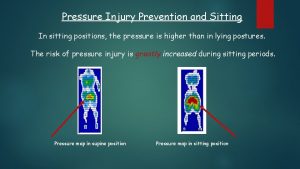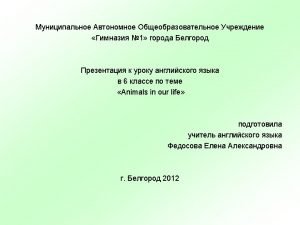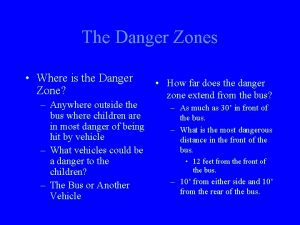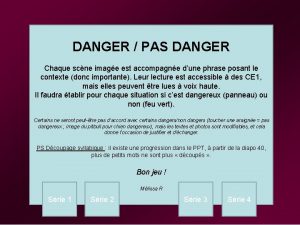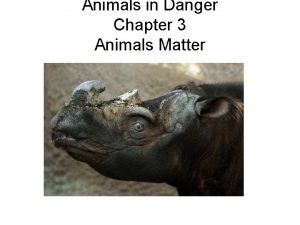Case 7 Stranger Danger David was sitting in




























- Slides: 28

Case #7 Stranger Danger /

David was sitting in his hotel room reading a book, when he heard a knock at the door, and the sound of someone trying the door handle. He opened the door, where he saw a man whom he had never seen before. The man said, "I'm terribly sorry. . . I thought this was my room. Wrong floor, I guess. " He then walked off down the hall toward the elevator. David went back into his room, thought about what had just happened, and then phoned the front desk, suggesting they call the police, since the man at the door had obviously been a thief. Why was David so sure the man had been a thief? /

The man had knocked first. He wouldn't have done that if he'd thought it was his room.

Human Remains Unit 6 Mrs. Pearson’s Forensic Science

WARNING! n Some of the images are from real autopsies – if you are squeamish, you may want to click the “X” on the application share box and just listen to the information presented instead.

What is an Autopsy? n n An autopsy is a post mortem examination performed on a corpse to determine the cause and manner of death. The prefix 'auto-' means 'self', and so autopsy means 'to see for oneself‘. *Those watching by recording, include in your email the meaning of “auto”

Why is a Forensic Autopsy preformed? n n Forensics autopsies are preformed when the cause of death of a victim may be a criminal case, often involving foul play. A forensic autopsy applies science to legal law.

Classification n n In a forensic autopsy, death is placed into five different categories. n Natural n Accident n Homicide n Suicide n Unknown Following an in-depth examination of all the evidence, a medical examiner or coroner will assign a manner of death as one of the five listed above; and detail the evidence on the mechanism of the death. **Those watching by recording, include in your email the five different categories for classifying cause of death

Natural Death n n n Death by natural cause is a term used by coroners to describe the death of someone by occurring disease process, or a cause that is not apparent by given medical history or circumstances. The majority of natural death is caused by old age. Other causes of natural death are heart disease, stroke, genetic disorders, etc.

Accidental Death n Accidental death is a death that is often caused by mistake or a freak occurrence. These deaths are not planned but can be explained by surrounding circumstances.

Homicidal Death n n n The term ‘homicide’ refers to the act of killing another person. There are different types of homicide. n Infanticide - Killing of an infant n Fratricide - Killing of one's brother; in a military context, killing of a friendly combatant n Sororicide - Killing of one's sister n Parricide - Killing of one's parents n Patricide - Killing of one's father n Matricide - Killing of one's mother n Mariticide - Killing of one's spouse n Uxoricide - Killing of one's wife n Filicide - Killing of one's child n Regicide - Killing of a monarch. n Genocide - Killing of a national, ethnic, racial or religious group Homicide is often the most investigated death, therefore making it the most autopsied.

Suicidal Death n n n The act of ending ones own life. These autopsies often have an easily identifiable source, cause, or other factor of death. Suicide is often identified in the forensic autopsy as a cause of toxic, firearms, blunt force trauma, etc.

Unknown Death n In some jurisdictions, the Undetermined category may include deaths in absentia, such as deaths at sea and missing persons declared dead in a court of law; in others, such deaths are classified under "Other".

Experts Who Perform Forensic Autopsies n n A forensic autopsy is usually preformed by a specialized medical doctor called a forensics pathologist or medical examiner. To be a pathologist, the doctor must have completed a four-year undergraduate program, four years of medical school training, and three to four years of postgraduate training in the form of a pathology residency. **Those watching by recording, include in your email the training a pathologist must undergo to receive his or her degree.

Protocol for Performing A Forensic Autopsy? n n The corpse is brought to the medical examiner’s office in a brand new body bag (to avoid transfer of evidence between cases) or in a set of evidence sheets. The body is then placed on the cadaver dissection table.

Physical Examination n The physical examination of the body is broken up into two parts. n External Examination n n The external examination consists of inspecting the physical outer layer of the body for signs of foul play that would result in injury or death. Internal Examination. n The internal examination consists of inspecting the internal organs of the body for evidence of trauma or other indications of the cause of death.

External Examination Steps of an external examination. 1. Photographed. 2. Physical evidence collected off body. 3. Samples of hair, nails, etc. are collected. 4. Undressed, examined for wounds. 1. 5. Lacerations, abrasions, bruises. Measured, weighed, cleaned.

Internal Examination n 1. Steps of an internal examination. Incisions n n A “Y” shaped cut from behind each ear and running down the neck, meeting at the breastbone, continuing towards the groin. Most often used in cases of suspected strangulation. A “T” shaped cut from each shoulder , meeting at the breastbone, continuing towards the groin. Used to create a better looking finished product as this cut is not often seen. Single vertical cut from throat to groin. All cuts are deviating towards the left.

Internal Examination (cont’d) 2. Cuts 1. 2. 3. Removal 1. 2. 4. The chest cavity is cut open using shears. The ribs are sawed away, letting them be lifted off the body, exposing the heart and lungs. En masse technique of Letulle – All organs removed at once. En bloc method of Ghon – organs divided into four groups and removed in sections. All removed organs are now weighed and examined for unusual markings or signs.

Internal Examination (cont’d) 5. Brain examination 1. 2. 3. 4. An incision is made from a point behind one ear, over the top of the head, to a point behind the opposite ear. The scalp is pulled away from the skull, creating tow flaps. The front flap goes over the face, the rear flap over the neck. The skull is then cut with an electric saw to create a cover that can be pulled off to expose the brain. The brain is then cut from the spinal cord and lifted out of the skull for further examination.

Internal Examination (cont’d) n In addition, n The cardiovascular system, the respiratory system, the central nervous system, and all other “systems” in the body that help control activity are examined.

Liver Mortis n Defined as ‘Color of Death’. n Coloration of the skin. At death, the heart stops working. When the heart stops working, the blood stops pumping. The blood stops pumping, the red blood cells and plasma gather on the bottom part of the body, closet to the floor. n The body is a purple color and reaches it’s maximum 8 -12 hours after death. n

Algor Mortis n Defined as ‘Coolness of Death’. n Temperature of body. n n In a controlled environment, starting at 98. 6 degrees, the body will drop one degree per hour. This happens because at death, the respiratory system stops working, the body stops functioning because it is no longer moving. When taking the temperature of a corpse, you can’t take it in the mouth because the muscles will be relaxed and the tongue won’t stay on top of thermometer. Thinner people cool faster then fat people.

Rigor Mortis n Defined as ‘Stiffness of Death’. n Flexibility of the body. n n n Shows up 2 hours after death Peaks 12 hours after death. Takes 12 -24 hours for entire rigor mortis effect to take place. At approximately 24 hours after death, the body is at its stiffest. The eyelids are affected first, then the jaw, face, trunk, arms, legs. Ends after 24 -36 hours.

Pallor Mortis n Defined as ‘Paleness of Death’. n Tone of the body. Happens 15 -20 minutes after death. n Happens due to lack of capillary circulation in the body. n Can not be used to determine time of death except if body is found still with color. n **Those watching by recording, include in your email the four different forms of “mortis” described in the lesson.

Sources n n Wikipedia. com Midwest Autopsy and Medical Services n n The Virtual Autopsy n n http: //www. pathguy. com/autopsy. htm http: //www. le. ac. uk/pa/teach/va/welcome. html How Stuff Works n http: //health. howstuffworks. com/autopsy. htm

Review n n An autopsy is a post-mortem examination of a body to determine cause of death Autopsies are performed by professionally trained medical examiners also called pathologists. Internal and external examination is used to gather information on cause of death. Time of death can sometimes be estimated through liver mortis, algor mortis, rigor mortis, or pallor mortis.

Questions?
 Best worst and average case
Best worst and average case Zéolite danger
Zéolite danger Danger area of the scalp
Danger area of the scalp What is the food danger zone
What is the food danger zone Extreme danger gap active shooter
Extreme danger gap active shooter Freedom from danger
Freedom from danger Safety valve hematoma
Safety valve hematoma Dangerous space of neck
Dangerous space of neck Litter evacuation
Litter evacuation Cascade sous marine
Cascade sous marine General danger signs
General danger signs What is the food danger zone
What is the food danger zone Cycle of transmission food safe
Cycle of transmission food safe Impending danger threats
Impending danger threats Asea redox bienfaits
Asea redox bienfaits Falx cerebri
Falx cerebri Danger space of neck
Danger space of neck Jet blast danger area
Jet blast danger area Convertir sustantivos en adjetivos
Convertir sustantivos en adjetivos Our planet is in danger
Our planet is in danger Laterior
Laterior Defination of triage
Defination of triage Linear danger area
Linear danger area Albeda danger
Albeda danger The danger of a naive working class animal farm
The danger of a naive working class animal farm What is the conflict in animal farm
What is the conflict in animal farm The danger of silence analysis
The danger of silence analysis Ms risk factors
Ms risk factors Literary definition of symbolism
Literary definition of symbolism

